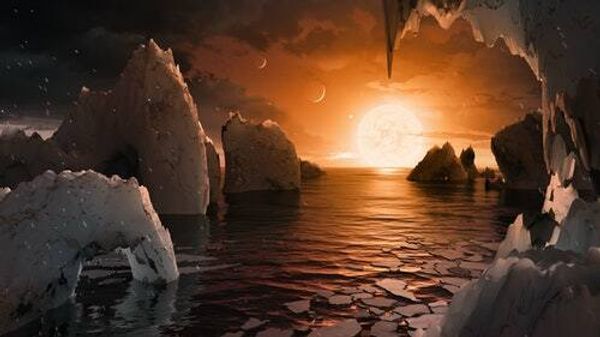
Prehistoric stretching of the continents is likely to have caused one of the most extreme episodes of global warming in the history of the Earth, according to new research.
Scientists have studied the effects of global tectonic forces and volcanic eruptions during a period of environmental change 56 million years ago.
During this time, the planet experienced an increase of temperature of 5-8C, culminating in the Palaeocene-Eocene Thermal Maximum (PETM), which lasted about 170,000 years.
This caused the extinction of many deep-sea organisms, reshaping the course of evolution of life on Earth.
The team, including scientists from the universities of Southampton, Edinburgh and Leeds, propose that the extensive stretching of the continental plates in the northern hemisphere massively reduced the pressures in the Earth’s deep interior.
This then drove intense, but short-lived melting in the mantle – a layer of sticky, molten rock just below the planet’s crust.
It’s generally agreed that a sudden and massive release of the greenhouse gas, carbon, from the Earth’s interior must have driven this event, yet the scale and pace of warming is very hard to explain by conventional volcanic processes— Dr Tom Gernon
The team suggests that the resulting volcanic activity coincided with, and likely caused, a massive burst of carbon release into the atmosphere linked to PETM warming.
Dr Tom Gernon, an associate professor of Earth science at the University of Southampton and lead author of the study, said: “Despite the importance and wider relevance of the PETM to global change today, the underlying cause is highly debated.
“It’s generally agreed that a sudden and massive release of the greenhouse gas, carbon, from the Earth’s interior must have driven this event, yet the scale and pace of warming is very hard to explain by conventional volcanic processes.”
The scientists found evidence from rock drilled from the seafloor for a widespread episode volcanic activity lasting 200,000 years which coincided with the PETM.
Samples taken from the north Atlantic region including Greenland and the Faroe Islands showed unusual compositions suggesting a significant increase in the amount of melting of the uppermost solid part of the Earth’s mantle.
Dr Gernon said this would have led to a rapid increase of carbon being released, which would have led to the global warming.
Dr Thea Hincks, senior research fellow at the University of Southampton and co-author on the study, said: “Using physically realistic estimates of the key characteristics of these volcanic systems, we show that the amount of carbon needed to drive warming could have been attained by enhanced melting.”
Dr Gernon added: “Such rapid events cause a fundamental reorganization of Earth’s surface environment, altering vast ecosystems.”
The study, which also involved the universities of Oldenburg and Florence and the Chinese Academy of Sciences, is published in the journal Nature Geoscience.










